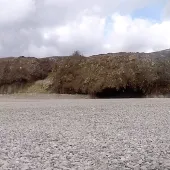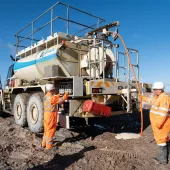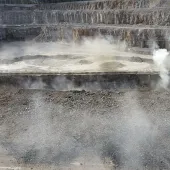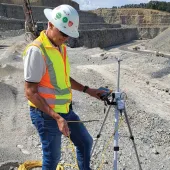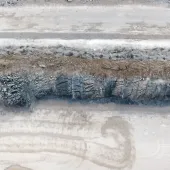Initiating Safe and Successful Blast Practices
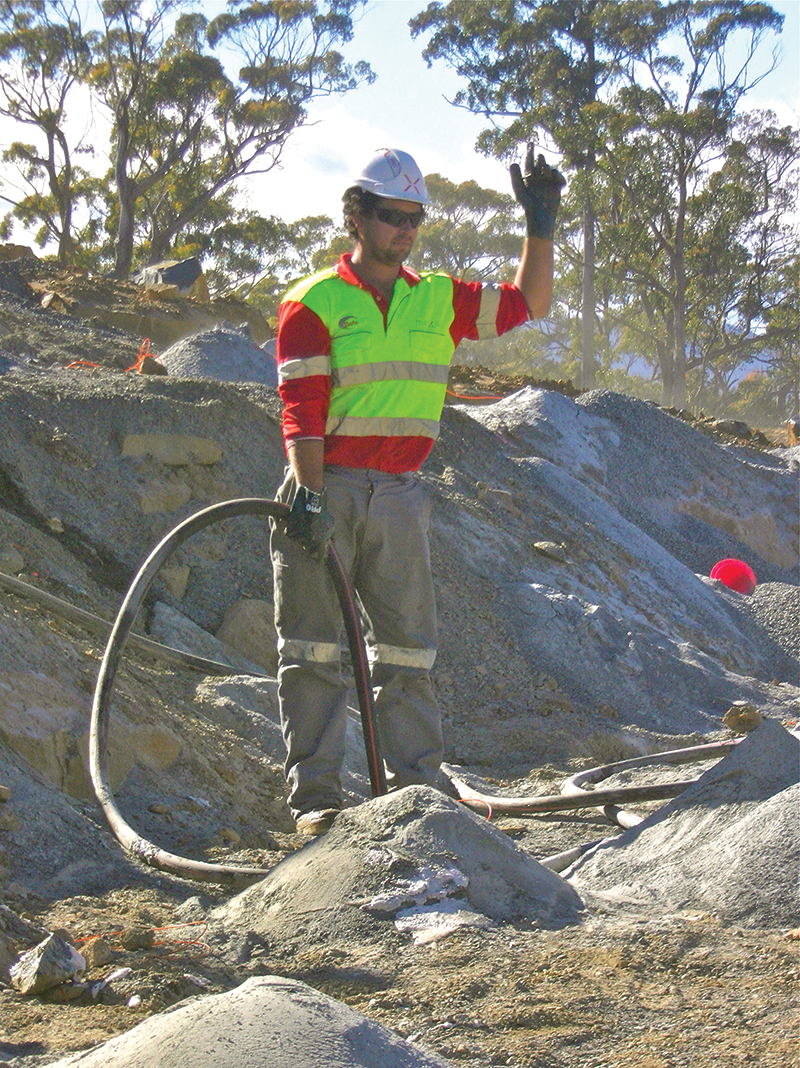
First published in the March 2014 issue of Quarry Management
What do you have to do to ensure you have undertaken all the right steps towards conducting a successful blast? And how much control do you have over the process? Shane Slaughter, senior technical applications adviser with Maxam Australia, provides some important advice on what you need to do in the pre-blast audit process and beyond.
Successful blasts do not come about by chance. They come about through careful planning, assessment and management of risk, the knowledge and teamwork of all personnel involved and, importantly, what physically happens on the bench during loading and firing of the blast. Focusing on these items allows the achievement of safe and effective blasting in various scenarios. Bench practices are the most readily observed of these items and are what most audits of drilling and blasting focus on. This auditing is essential but what is often missed in the process is the link between safe and effective bench practices and control of the blasts, and the effect on the economics of a blast if it is not implemented well.
This is not new but it is necessary to remember that implementation of blast practices on the bench heavily influences the successful outcome of the entire drilling and blasting process. Maxam place great emphasis on bench practices, as they recognize that if they are not carried out to the required standard, risk will increase to unacceptable levels. Cutting corners on the bench will lead to problems and the potential for serious incidents to occur or, at the very least, ineffective blast outcomes.
What are bench practices?
Bench practices are activities directly related to activities carried out on the actual blast. They are generally controlled or supervised by the shotfirer but other personnel may control some pre-blast activities. These activities and their influence on blast outcomes include (but are not exclusive to):
- Blast area preparation, including delineation and securing of the blast zone. If this is not carried out to the set standard then security of the blast could be compromised. Standards of blast delineation need to be sufficient to separate any person or equipment from the blast activities. Loading and hauling adjacent to a blast area is possible but must never occur if it potentially impacts on the safety of the blast area. Maxam always stand by the principle that safety overrides production and will not commence activities on any site if they feel safety could be compromised. Water management is an often overlooked consideration in this category and it can be required to prevent damage to explosive columns and/or blastholes. No successful open-cut blast can occur when water is located on or flowing over a blast.
- Blasthole management post-drilling, including collar consolidation (collars that are stable and do not collapse), depth measurement, water content and backfill. No blast will be successful if blastholes are not drilled in the correct location at the designed angle and to the right depth. Blastholes are often over-drilled to counter fall-back. If fall-back does not occur, then the blastholes need to be backfilled and if they contain water this backfill must be with aggregate, not drill cuttings. If this does not occur, then broken ground and over-blasting, excessive powder factors and environmental concerns will result.
- Vehicle movement on the blast area must be controlled after drilling and through to firing of the blast. Maxam often see evidence of vehicle movement on blasts before loading commences, with the resulting loss of depth of blastholes or even loss of entire blastholes.
- Stemming distribution must be carried out before loading commences and it must be carried out so it does not interfere with blasthole collars or mobile sensitising unit (MSU) access on the blast. This is a simple task that Maxam find is often carried out to less than the required standard, causing MSU movement concerns, lost blastholes (covered or filled with stemming) and increased risk of injury due to excessive manual handling.
- Distribution of explosive accessories. Careful placement of explosive accessories is fundamental. Boosters and down-hole detonators must be placed so they are easily located and not lost in drill cuttings or down blastholes.
- Priming of blastholes, where primers are made up at the blasthole collar and placed in the blasthole at the required depth. If this is not carried out as required, adequate initiation energy may not be transferred to the explosive and/or misfires may occur.
- Loading of blastholes, especially pumped explosive product, must be carried out as per manufacturers’ instructions. Top loading is not recommended within Maxam due to potential density concerns, as well as dislocation of explosive columns. Hose retraction rates must be carefully monitored to ensure complete explosive columns free of water or mud are loaded. Primers must be within this explosive column and not ‘floating’ due to poor loading technique.
- Stemming of blastholes is vital to confine explosion energy. This is a very important part of the process and if carried out in a poor manner will lead to energy loss, flyrock and environmental issues.
- Surface connection requires the ‘training’ of personnel in correct connection techniques recommended by the manufacturer. When personnel do not take care and ignore manufacturer-recommended procedures, issues will arise. This is where human error can be an issue and risk becomes unacceptable when misfires occur as a result.
- The firing of the blast requires very good discipline from the shotfirer and blast controllers, otherwise unacceptable risk will occur.
- Checking of the blast post-firing is an often overlooked bench practice that is vital in bringing to a close the bench activities. If the blast is not checked fully and misfires are missed, then risk is raised to site personnel excavating the blast. Access to the blast area post-blast by personnel and equipment must also be managed as blasts often alter access routes and barriers are often required.
What are the common challenges among these activities that Maxam encounter and note influence the blast safety and results? The answer to this is varied and depends on the site, geology, process used and experience of the personnel and the shotfirer involved. Maxam Australia use uSafe, a safety management system, as a control of their activities on site, as well as active risk management on the bench. Risk assessments are conducted before activities commence on a bench, in which risks are discussed and controls implemented. Safety is never compromised and the use of industry-leading bench practices has led to Maxam customers having confidence in safe and effective blast outcomes.
This Article first appeared in the August 2013 edition of Quarry magazine, the official journal of the Institute of Quarrying Australia, and is reproduced here by kind permission.
- Subscribe to Quarry Management, the monthly journal for the mineral products industry, to read articles before they appear on Agg-Net

